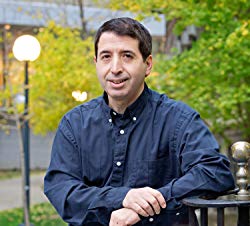It’s no secret that buildings can be energy guzzlers – so anything that architects and builders can do to improve building designs can both save money and help the environment. But Danny Tarlow, a PhD candidate in computer science, says the usual approach – which relies on modelling a building’s physical characteristics in detail – is often ineffective.
This Number Crunching Life
It’s hard to get the inputs right,” Tarlow says. “To track down, for a given building, what the walls and floor are made out of, and to draw a 3-D model of the whole thing – it’s very complicated. It’s easy to have wrong or incomplete information.”
Tarlow believes we can make better energy-use predictions by not only examining individual structures, but by collecting energy-use data from dozens or even hundreds of buildings. With enough data, patterns emerge. “You start to see commonalities between buildings,” Tarlow says. “You use what you’ve learned about the first two buildings on Main Street to make predictions about the third” – even if it is still under construction.
Tarlow and his colleagues spent more than a year analyzing data provided by the Walt Disney Company, which keeps meticulous records of energy use at all of its theme parks. Disney parks are also remarkably homogeneous, with similar shops and restaurants found from one park to another, from California to Florida to Hong Kong. This means that information from one park can help predict energy-use patterns in a similar building, even if it’s thousands of kilometres away. Tarlow’s goal is to develop computer models that make better predictions about energy use than models based solely on physical data from a specific building. That, in turn, could ultimately aid in the design of new buildings or in the retrofitting of old ones.
Tarlow’s strategy is still in its early stages; for now he’s just trying to show that the method has potential. But he says the principles used in the Disney study could apply to any large group of buildings with similar properties, such as a chain of fast-food restaurants or big-box department stores. The people who run those buildings, Tarlow says, are more conscious than ever about how efficiently the structures are operating. “A significant portion of the energy used in the developed world goes toward heating, cooling and operating buildings,” he says. Learning to operate buildings smartly “is one piece of the puzzle, and I think it’s an important piece.”






